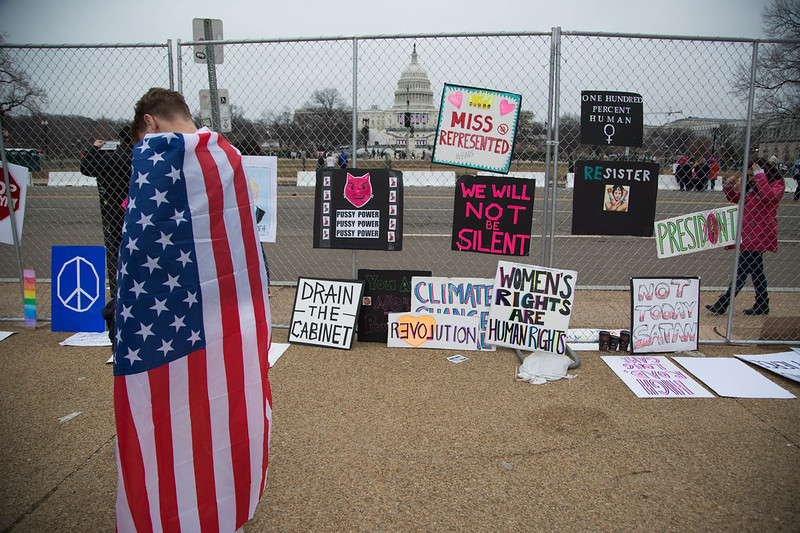The art of the march
January 23, 2017
As far as the Internet is concerned, the iconic speeches, celebrity appearances and choric chanting didn’t steal the show at the Women’s March in Washington D.C. on Jan. 21. Instead, it was the posters.
Immediately after crowds started to form, media outlets captured, posted and shared images of poster art faster than any information could be gathered. It makes sense to create visual content first - especially when it’s in the form of photo galleries or slideshows that are telling of the scene’s atmosphere. But a rising critique of protest posters surrounds the notion that art meant to evoke emotion and incite change can often be reduced to memes.

Rochester-based sculptor Jacquelyn O'Brien focuses on gender politics through feminist art, and participated in the D.C. march.
"I'm always skeptical when I see taglines. They can be dangerous because they reduce an issue to a bumper sticker ideal," O'Brien said. "But as an artist who uses words to express my concepts, I grew to appreciate what I saw. It was inspiring to see the time so many put into these political statement signs."
The Women’s March gained global participation and served as a response to President Donald Trump’s inauguration in an attempt to raise awareness to women’s equality. Considering the overwhelming amount of anti-Trump art that was created during his campaign, it’s important to ask how art will continue to play a role during his administration.
A possible answer came just the day before President Trump was sworn into office as reports surfaced stating his administration plans to end funding for the National Endowment for the Arts and the National Endowment for the Humanities. If true, countless of local and state arts organizations, as well as independent artists who depend on grants, could dwindle away within the next four years.
It has also been reported the Corporation for Public Broadcasting, which includes PBS, NPR and smaller independent public media outlets, will be privatized.
Art, especially when made accessible and public, has been historically praised for its influence on societal and cultural change. The suppression or censorship of art is not only damaging to expression but halts a visual record of existence.
One example of this lives at The National Museum of Women in the Arts, which celebrated the Women’s March in D.C. by having free admission all weekend. Marchers were able to seek refuge and drink hot cider and coffee inside the museum as it grew dark on Saturday. The museum served as a literal safe space, which was fitting since the director of public programs Lorie Mertes helped create and now oversees the museum’s public program Women, Arts, and Social Change.
“Our purpose is to increase visibility and champion women through the arts,” she said. “We’re really fortunate with timing and location; the march went right through here.”
For marchers and artists like O'Brien, this invitation reinforced why they were participating in the march in the first place. With the possibility of an end of arts funding, artists could face an unavoidable roadblock to their livelihoods and expression.
"I don't know how other artists will react... but I know how I will," O'Brien said. "I plan to make [art] with more fervor than ever before. I will refuse to be quiet or reserved about the critiques my work makes toward the current climate, and I will defend its place in the world."
More by this author
- "Lives Change Here": How one bridge prompted the Near Westside community to take action
- Chuck's new location: Gotcha Edition
- Protecting food as a human right in the U.S. begins with education
- Politits Art Coalition fights censorship with solidarity
- Lady Gaga created ‘Joanne’ for herself, not her monsters
Related tags
Popular tags on recent stories
By visiting this site, you agree to the Terms of Use
Produced by S.I. Newhouse School of Public Communications,
Syracuse University, 215 University Place, Syracuse, NY 13244







Post new comment